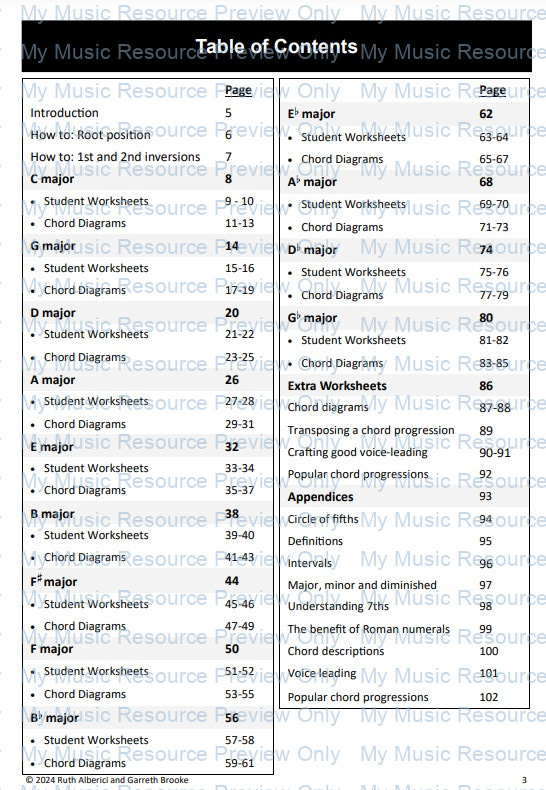Piano Chords in All Major and Minor Keys
This super-accessible resource will help your students learn music and write music more quickly
Theory is the backbone of creativity. Without a solid understanding, compositions and improvisations will likely sound either boring or messy.
The problem is, theory has a bit of a reputation for being boring.
That’s a shame.
I find that if you make it relevant and practical, the majority of students enjoy learning theory.
On the other hand if you teach theory away from an instrument, only the nerdiest of kids will enjoy it.
(Full disclosure: I was one of those kids).
These books make learning chords practical
I spent several months in 2024 working with Ruth Alberici of MyMusicResource.com to design the best resource for teaching chords.
The resulting resource is called Piano Chords in All Major and Minor Keys: Everything You’ll Ever Need to Understand Chords.
It’s best to learn chords within a key, so we’ve created tables that will give your students a simple overview of what chords they are likely to encounter in whatever key they’re playing.




We also highly recommend that the student figures this all out for themselves, so we’ve included a complete set of worksheets like this:
This resource works for classical music too!
Although you might tend to think about chords as being most closely related to pop and contemporary music, this resource is designed to help your students to think about chords in classical music — just like classical composers did!
That’s partly because we introduce the Roman numeral analysis, which helps students to understand how classical harmony works.
And it’s partly because our resource makes it easy for students to understand transposition, which is a major component of sonata form.
There are other worksheets too!
Besides the chords in keys section, we’ve included:
a blank chord worksheet page that you can use with any key, including minors and modes
a worksheet that uses Roman numerals to transpose chord progressions
a simple visual guide to good voice leading, in worksheet form
a worksheet so your student can figure out popular chord progressions in every major key
I’m particularly happy with the worksheet Crafting Good-Voice Leading. I use this in lessons all the time, and it’s brilliantly simple so students of all ages grasp it really quickly.
On top of that, there’s a bunch of appendices that explain the theory in plain English. That’s crucial — I can’t stand theory books where the language is excessively complex!
Inspired by what my students need
This book is the product of a great deal of thought about what my students need. They learn theory best when they can visualise it and grasp it in their hands. That’s why the worksheets are so effective, much more so than any other resource I’ve found. I use it in my lessons all the time.
I hope you’ll find as useful as I do!




